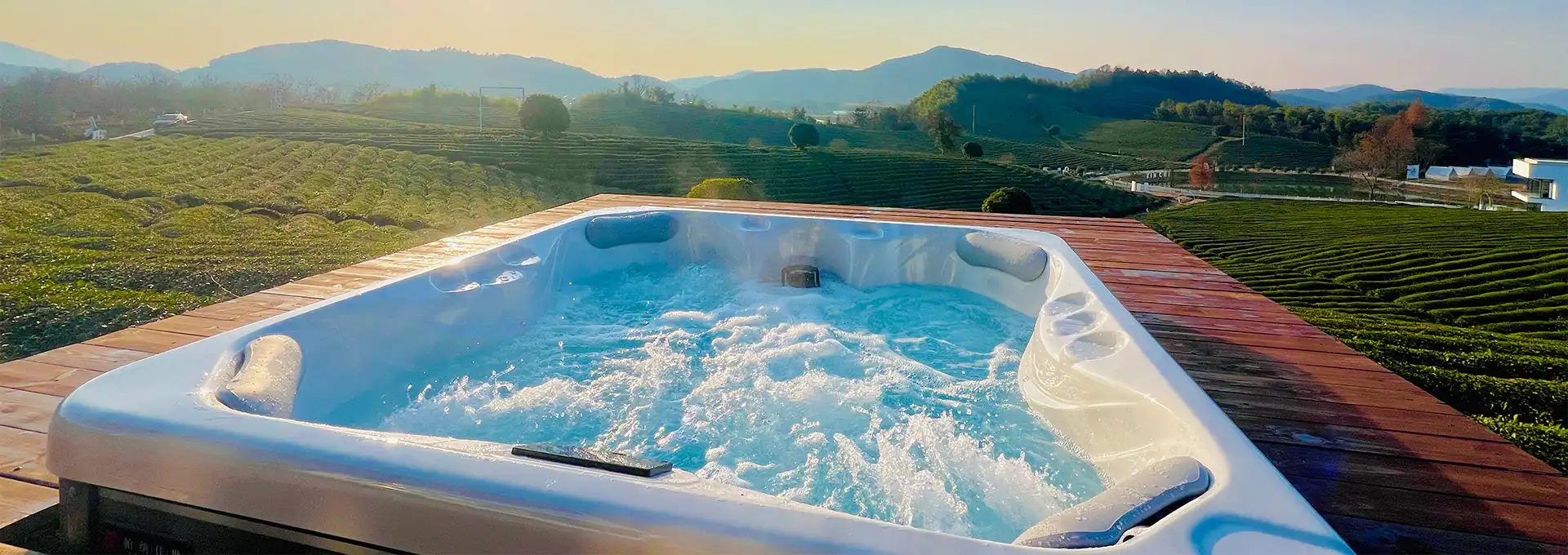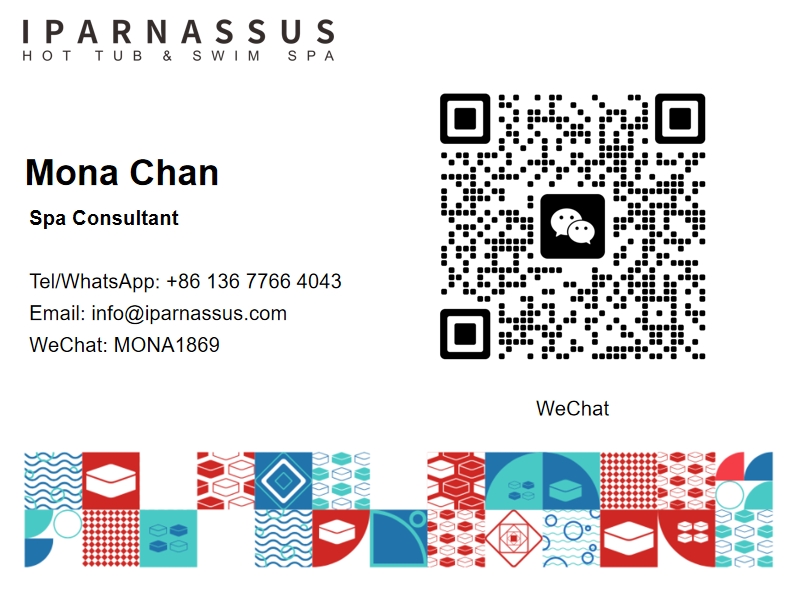Are Outdoor Hot Tubs Going Out of Style?
2025-02-24 14:42:04
In recent years, the popularity of outdoor hot tubs has been a topic of debate among homeowners, designers, and real estate experts. While some argue that these luxurious backyard additions are becoming passé, others insist that they remain a coveted feature for relaxation and entertainment. This article delves into the current trends surrounding outdoor hot tubs, exploring whether they are indeed going out of style or if they continue to be a desirable amenity for modern homes.
What are the benefits of having an outdoor hot tub?
Outdoor hot tubs offer a multitude of benefits that continue to make them attractive to homeowners. First and foremost, they provide a perfect oasis for relaxation and stress relief. After a long day at work or a strenuous workout, soaking in warm, bubbling water can help soothe sore muscles and calm the mind. The hydrotherapy provided by hot tubs has been shown to improve circulation, reduce muscle tension, and promote better sleep.
Beyond the physical benefits, outdoor hot tubs also serve as a social hub for family and friends. They create an inviting space for gatherings, fostering connections and memorable experiences. Whether it's a romantic evening for two or a lively party with friends, hot tubs offer a unique setting for socializing and entertainment.
Additionally, outdoor hot tubs can be a valuable asset for those dealing with certain health conditions. The warm water and massaging jets can provide relief for individuals suffering from arthritis, fibromyalgia, or other chronic pain conditions. The buoyancy of the water also reduces pressure on joints, making it an excellent low-impact exercise option for those with mobility issues.
From an aesthetic perspective, a well-designed outdoor hot tub can significantly enhance the visual appeal of a backyard. Modern hot tubs come in various styles and can be seamlessly integrated into landscaping designs, creating a luxurious and inviting outdoor living space. This added feature can potentially increase property value, making it an attractive investment for homeowners looking to boost their home's resale potential.
Moreover, outdoor hot tubs offer year-round enjoyment. While they're perfect for cooling off on hot summer days, they truly shine in cooler months. There's something magical about relaxing in warm, bubbling water while surrounded by a crisp autumn evening or a snowy winter landscape. This versatility ensures that hot tubs remain a valuable addition to outdoor spaces throughout all seasons.
How much does it cost to maintain an outdoor hot tub?
When considering the installation of an outdoor hot tub, it's crucial to factor in the ongoing maintenance costs. While the initial investment in a quality hot tub can be substantial, the long-term expenses associated with upkeep are often what surprise many homeowners. Understanding these costs can help potential buyers make an informed decision and budget accordingly.
The primary recurring expense for outdoor hot tub maintenance is electricity. Hot tubs require constant heating and filtration, which can significantly impact energy bills. On average, homeowners can expect to see an increase of $20 to $50 per month in their electricity costs, depending on factors such as tub size, usage frequency, and local energy rates. However, newer, energy-efficient models and proper insulation can help mitigate these costs.
Water treatment is another ongoing expense. To keep the water clean and safe for use, hot tub owners need to regularly purchase and add chemicals such as chlorine, bromine, or alternative sanitizers. These chemicals, along with pH balancers and other water care products, can cost between $20 and $60 per month, depending on the size of the tub and how frequently it's used.
Filter replacement is an often-overlooked maintenance cost. Hot tub filters typically need to be replaced every 1-2 years, with costs ranging from $20 to $80 per filter. Some hot tubs may require multiple filters, further increasing this expense. Regular cleaning of the filters can extend their lifespan, but replacement is eventually necessary to maintain water quality and system efficiency.
Periodic professional servicing is recommended to keep the hot tub in optimal condition. This might include tasks such as draining and refilling the tub, deep cleaning, checking and repairing mechanical components, and winterizing (in colder climates). Professional service calls can range from $100 to $300 per visit, with most hot tub owners scheduling 1-2 service appointments per year.
Cover replacement is another cost to consider. A good-quality hot tub cover can last 3-5 years with proper care, but eventually, it will need to be replaced. New covers can cost anywhere from $300 to $800, depending on size and quality. Regular cleaning and treatment of the cover can help extend its lifespan and delay this expense.
Unexpected repairs can also add to the maintenance costs. While quality hot tubs are built to last, components such as pumps, heaters, or control panels may need repair or replacement over time. These repairs can range from $100 for minor issues to over $1,000 for major component replacements.
When tallying up these expenses, homeowners can expect to spend an average of $500 to $1,500 per year on hot tub maintenance, not including potential repairs or replacements. However, this cost can vary widely based on factors such as tub size, usage, local climate, and the owner's diligence in performing regular maintenance tasks.
Are inflatable hot tubs a good alternative to traditional outdoor hot tubs?
As the debate over the longevity of traditional outdoor hot tubs continues, many homeowners are turning their attention to inflatable hot tubs as a potential alternative. These portable, less expensive options have gained popularity in recent years, prompting the question: Are inflatable hot tubs a good alternative to traditional outdoor hot tubs?
One of the most significant advantages of inflatable hot tubs is their affordability. While traditional outdoor hot tubs can cost anywhere from $3,000 to $20,000 or more, inflatable models typically range from $300 to $1,000. This lower price point makes them an attractive option for budget-conscious consumers or those who are unsure about committing to a permanent hot tub installation.
However, it's important to note that inflatable hot tubs do have some limitations compared to traditional models. They generally have less powerful jets and may not offer the same level of hydrotherapy as their permanent counterparts. The materials used in inflatable tubs, while durable, are not as long-lasting as the acrylic or fiberglass shells of traditional hot tubs, potentially leading to a shorter lifespan.
Energy efficiency is another area where inflatable hot tubs may fall short. Their less robust insulation can result in higher energy costs, particularly in colder climates. Users may find that maintaining water temperature is more challenging and costly with an inflatable model, especially during winter months.
Capacity and depth are also considerations. Inflatable hot tubs typically accommodate fewer people and have a shallower water depth compared to traditional models. This may impact the overall experience and limit the types of hydrotherapy exercises that can be performed.
Despite these limitations, many users find that inflatable hot tubs meet their needs adequately, especially those who use them occasionally or seasonally. They offer a way to enjoy the benefits of hot tub therapy without the long-term commitment and higher costs associated with permanent installations.
In conclusion, while inflatable hot tubs may not be a perfect substitute for traditional outdoor hot tubs in all scenarios, they do offer a viable alternative for many consumers. They provide an accessible entry point into hot tub ownership, allowing more people to experience the benefits of hydrotherapy and relaxation. As with any significant purchase, potential buyers should carefully weigh the pros and cons, considering factors such as budget, available space, intended use, and long-term goals before deciding between an inflatable or traditional outdoor hot tub.
Conclusion
While trends in home amenities continue to evolve, outdoor hot tubs seem to be holding their ground as desirable features for many homeowners. Their enduring appeal lies in the unique combination of relaxation, health benefits, and social opportunities they provide. However, the rise of alternatives like inflatable hot tubs and the consideration of maintenance costs suggest that the market is diversifying rather than declining.
Ultimately, whether outdoor hot tubs are going out of style depends largely on individual preferences, lifestyle needs, and budget considerations. For those who value the therapeutic benefits, social aspects, and luxury feel of a permanent installation, traditional outdoor hot tubs remain a popular choice. Others may find that inflatable models or alternative outdoor features better suit their needs.
As with many home improvement decisions, the key is to assess personal priorities, long-term plans, and the specific characteristics of one's property. While outdoor hot tubs may not be universally trendy, they continue to offer significant value for many homeowners, suggesting that they are evolving rather than disappearing from the landscape of desirable home features.
For more information on outdoor hot tubs installations and our products, please feel free to contact us at info@iparnassus.com.
References
- Smith, J. (2023). "The Evolution of Outdoor Living Spaces." Home & Garden Magazine.
- Johnson, A. (2022). "Health Benefits of Hydrotherapy." Journal of Alternative Medicine.
- Brown, T. (2023). "Energy Efficiency in Home Amenities." Sustainable Living Today.
- Davis, M. (2022). "Cost Analysis: Traditional vs. Inflatable Hot Tubs." Consumer Reports.
- Wilson, E. (2023). "Trends in Backyard Design." Landscape Architecture Quarterly.
- Thompson, L. (2022). "Maintenance Costs of Outdoor Hot Tubs." Home Improvement Guide.
- Anderson, K. (2023). "Real Estate Value: Impact of Outdoor Amenities." Property Investor Weekly.
- Lee, S. (2022). "Innovations in Hot Tub Technology." Tech & Leisure Magazine.
- Garcia, R. (2023). "Portable Luxury: The Rise of Inflatable Hot Tubs." Modern Living.
- White, P. (2022). "Year-Round Enjoyment: Seasonal Use of Outdoor Hot Tubs." Outdoor Living Digest.
Send Inquiry
Related Industry Knowledge
- Can Hotel Hot Tubs Withstand the Scorching Middle Eastern Heat?
- Can a Swim Spa Be Put in the Ground?
- How to Install a Swim Spa?
- What's a Swim Spa?
- How to Drain My Swim Spa?
- How to Lower Stabilizer in Hot Tub?
- What are the Key Features to Look for in a 5 Person Hot Tub?
- How Do I Choose the Right Outdoor Swimming Spa Cover or Barrier to Comply With Safety Regulations?
- Can a Swim Spa Be a Medical Tax Deduction?
- Can You Go in a Hot Tub with a Concussion?



